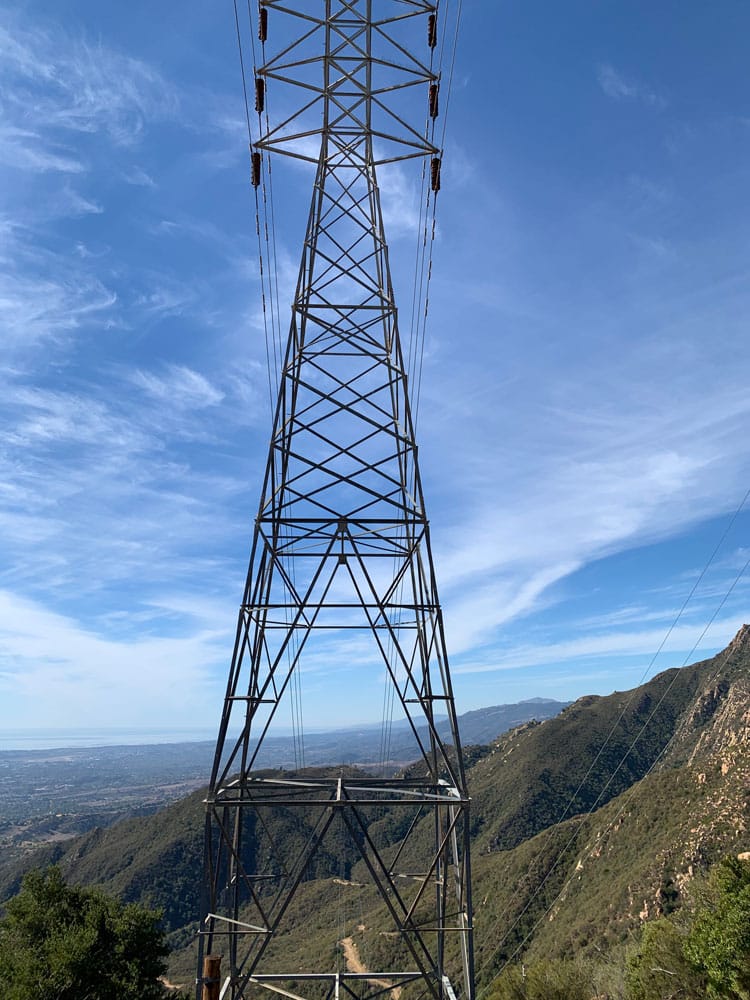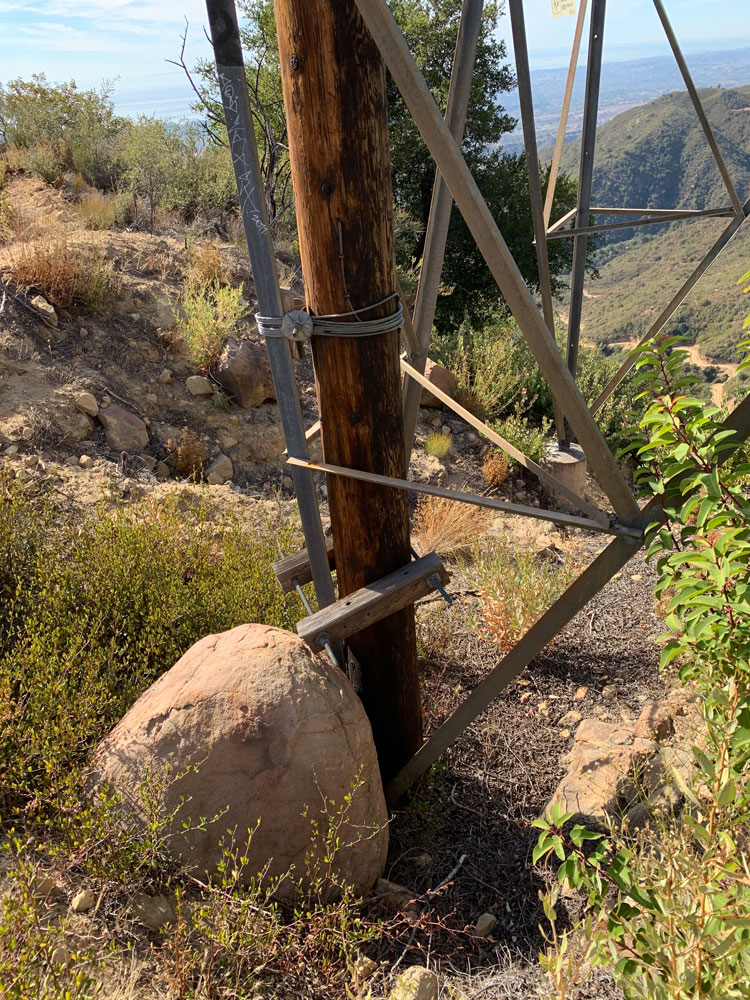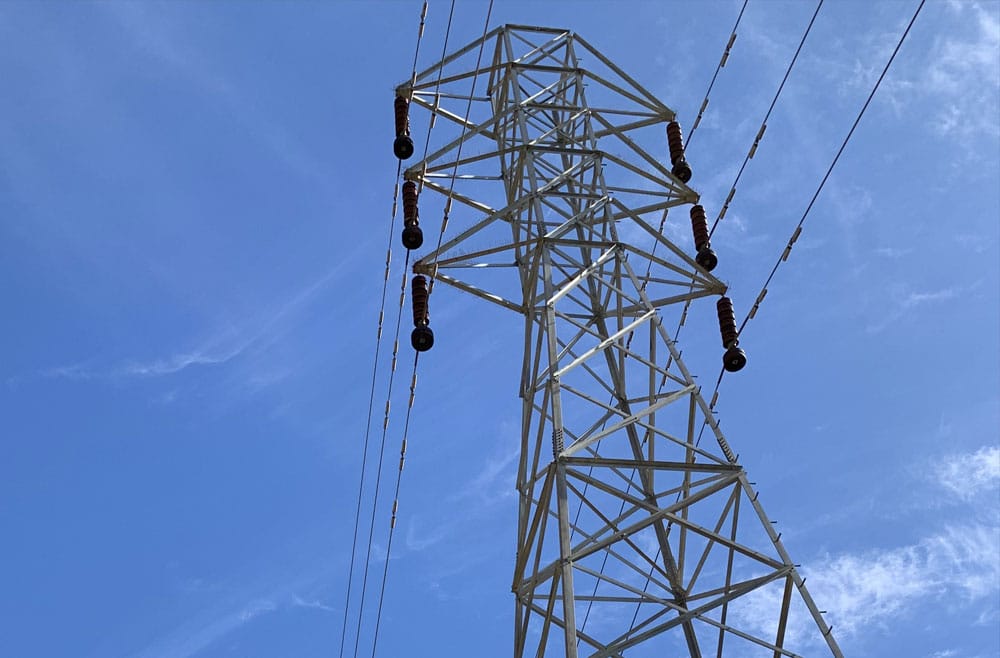The other day, I went for a hike with my pup in the mountains above Santa Barbara. We picked a trail that was nice and strenuous, but didn’t seem to offer the best views; so, as I am known to do, I threw an audible and decided to take a detour back to the trailhead. Little did I know that this detour would double not only the distance of the hike, but also the total elevation gain. Needless to say, we were pretty spent by the end of the 3.5 hr hike. Remind me to follow the original plan next time.
Along the way, I picked up a service road for the local utility’s sub-transmission lines. This was one of the power lines that distribute electricity for the Goleta Load Pocket – a 70-mile stretch of the Southern California coastline that is ultimately served by a single transmission line from the bulk electric grid. These sub-transmission lines take energy from the CAISO-controlled power grid and distribute it throughout the Goleta-Santa Barbara-Carpinteria communities, typically using 115kV double-circuit power lines, sometimes augmented with an additional line (my route took me by one of these double-tower, three-circuit setups). The 115kV lines also traverse the mountainous terrain of the area, the huge spans between towers causing the lines to dip deep into the valleys. An incredible feat of engineering with positives and challenges.

Figure 1. Sub-transmission in the mountains above Santa Barbara – Rattlesnake Canyon

Figure 2. Sub-transmission in the mountains above Santa Barbara – Rattlesnake Canyon

Figure 3. Temporary fix or permanent solution?
This is actually not a result of bad design – most of the grid in Southern California is radial in nature, and there are distinct advantages to such a system, including minimized overall infrastructure costs and simplified switching and control schemes. This would tend to result in minimal costs being passed on to ratepayers (i.e., you and I). The chief disadvantage though, is that large swaths of area have single points of failure, as the system is not networked in such a way that the failure of a line in one part of the system can be mitigated by diverting power through another line. If the line serving your geographic area goes down (for whatever reason; aging infrastructure, severe weather events, vandalism etc), as residents of the Goleta Load Pocket are all too keenly aware, then it’s lights out.

Figure 4. The Goleta Load Pocket, and the single transmission line serving it
Enter microgrids. Or distributed energy systems. Both terms refer to the same assemblage of technology; that is, a collection of multiple generation assets that may serve one or more load centers. At its smallest incarnation, a rooftop solar PV system with battery backup and standby generator powering your residence is a microgrid. Scaled up, microgrids can consist of utility-scale virtual power plants (solar/wind + storage) combined with conventional (read: carbon-based) generation to serve an entire community. The Goleta Load Pocket Community Microgrid is a great example of this larger, more complex example of a distributed energy system.
Microgrids offer distinct advantages in a world that must cope with not only the realities of climate change and the resulting natural disasters that threaten business as usual, but also inexorably rising energy demand. When designed optimally with intelligent dispatch of generation, they offer a potentially lower cost of energy than one could obtain from the utility provider. Not only could a microgrid save an individual or community money on their energy bills, but a microgrid can also provide resilience in the face of a power failure due to either natural disasters or deferred maintenance. Residents of California are all too familiar with the consequences of a lack of resilience, having recently suffered from utility-caused wildfires and public safety power shutoffs. Residents of the east coast and gulf states that suffer from power failures due to hurricanes and nor-easters would realize significant benefits from a microgrid optimally designed to provide resiliency in the face of a multi-day grid failure.
The VECKTA marketplace platform aims to accelerate the adoption of microgrids and distributed energy systems by providing an environment for businesses to transact with microgrid equipment providers, and allow an individual or business to obtain financing for their project. Today the market is fragmented and the solutions are complex. VECKTA empowers an integrated, accurate, transparent, and cost effective platform to deploy solutions customized to the users needs. VECKTA (powered by XENDEE) determines an optimal mix of generation technologies dispatched by the hour, based on the customer’s actual load profile. Systems can be designed to achieve minimum cost of energy, minimum carbon emissions, and/or provide resiliency in the face of a utility power outage. Once the system is designed, it’s as simple as choosing the equipment that makes up the microgrid, obtaining financing, and selecting the best company to install your system, all through the VECKTA platform.
Communities across the globe should be moving to adopt distributed generation. Electrical grids were historically designed in such a way that centralizes generation – but consumption and load is inherently distributed. Technology has progressed to the point that we can now economically generate our own energy in a distributed fashion and be less reliant on a solution designed for the last century. VECKTA’s mission is to enable this energy transition, from the old business as usual, to the future, where everyone has the potential to generate their own energy in a safe, reliable, cost effective, clean and renewable way.
Written By: Brian Noel, VECKTA Microgrid & Distributed Energy Systems Lead
